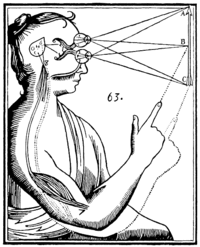
Photo from wikipedia
ABSTRACT The therapeutic relationship between practitioner and patient is embedded in the clinical interaction. Research using self-report tools has illustrated that positively evaluated therapeutic relationships can have favorable impacts on… Click to show full abstract
ABSTRACT The therapeutic relationship between practitioner and patient is embedded in the clinical interaction. Research using self-report tools has illustrated that positively evaluated therapeutic relationships can have favorable impacts on patient satisfaction with services and clinical outcomes. However, little is known about how physiotherapists develop the connections, or positive attachments, that help establish the therapeutic relationship. This study aimed to identify the various ways that physiotherapists establish meaningful connections with their patients. Interpretive description, a qualitative methodology, was used to structure the inductive and iterative design. Eleven physiotherapists and 7 patients from private practice clinics participated in semi-structured interviews to describe their experiences of the therapeutic relationship. Textual data were analyzed using qualitative content analysis and constant comparison. The iterative data generation and analysis process resulted in a framework composed of three “ways” (i.e. categories) of establishing connections: (1) acknowledging the individual, (2) giving-of-self, and (3) using the body as a pivot point. Findings were supported by various rigor strategies including peer debrief and external audit. This framework demonstrates that establishing connections is a multi-faceted endeavor with personal and professional characteristics. The findings provide practical knowledge that can be used to guide clinicians, educators, and researchers in addressing the therapeutic relationship.
Journal Title: Physiotherapy Theory and Practice
Year Published: 2019
Link to full text (if available)
Share on Social Media: Sign Up to like & get
recommendations!